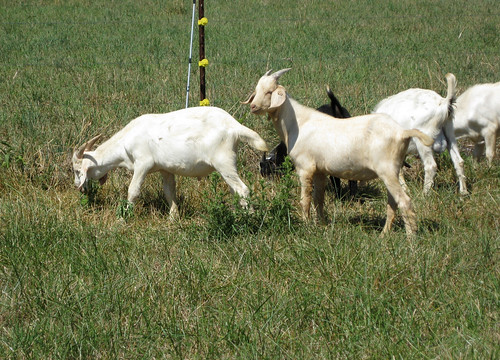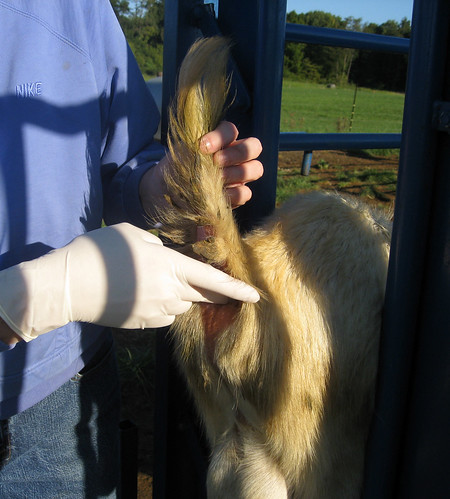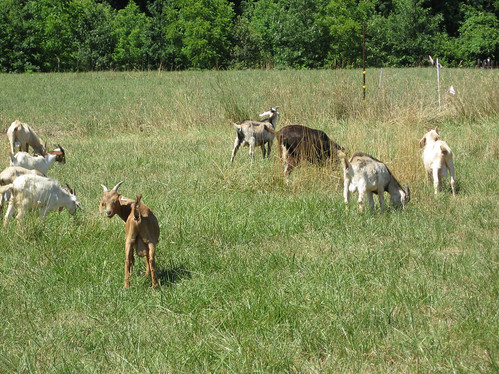While most of the goats are doing well, some have experienced some unexpected parasite problems during the first month of the test. Fecal data may help to explain some of these unexpected problems.
Upon arrival and every two weeks, individual fecal samples are collected from the rectum of each goat. A second fecal sample is collected from every third goat. These random samples are combined to form a pooled sample. If a fecal sample cannot be obtained from a goat, the goat is put in a pen and re-checked later in the morning. Usually, a sample is obtained from the second attempt.
 |
| Deteriorating pasture conditions |
The pooled sample is sent via overnight mail to Dr. Ray Kaplan's lab at the University of Georgia. After determining a pooled fecal egg count, the eggs are hatched. This takes about two weeks, after which time the larvae are identified to determine the type of parasites that are infecting the goats. Pooled samples are collected every 4 weeks.
From the fecals that were collected on June 4-5, the pooled fecal egg count was 1,100 epg. Eighty percent of the eggs were Haemonchus contortus (barber pole worm). Fifteen percent were Trichostrongylus; 5 percent were Nematodirus. Some trichuris and monezia (tapeworm) eggs were also observed in the sample. The pooled sample from July 1 had an egg count of 2,165 epg. Culture data for the July 1 sample will be available around July 14.
Individual fecal samples are collected in individual bags (on ice) and sent via overnight mail to Dr. Dahlia O'Brien's lab at Delaware State University. Individual fecal egg counts are determined using the Modified McMaster technique. At the start of the test, individual egg counts ranged from 0 to 5,067 epg and averaged 682 epg.
 |
| Collecting a fecal sample |
The efficacy of an anthelmintic (dewormer) is determined by comparing fecal egg counts pre- and post-treatment. Upon arrival to the test site, the goats were dewormed with albendazole (Valbazen®, 6 ml/100 lbs) and moxidectin (Cydectin® 1% injectable, 1 ml/110 lbs.) For the 72 goats that started the test, this initial double-deworming only reduced fecal egg counts by an average of 18 percent.
For those goats that had fecal egg counts above 1,000 epg, the double-deworming only reduced egg counts by 28 percent. In the past, the initial dewormings have reduced egg counts by 95% or more. In previous years, levamisole (Prohibit®) was used instead of albendazole. This year, levamisole was not available at the start of the test. Now, it is available in limited supply and the test was able to obtain several packets of drench powder.
 |
| Grazing cool season grass pasture |
These fecal data suggest that some of the parasite problems experienced by individual goats may be due to anthelmintic (dewormer) resistance. It is known that worms have developed resistance to all of the available dewormers. Resistance varies by farm and past anthelmintic use.
Any goat that becomes parasitized is further stressed by the heat and humidity. It has been very hot at the test site. Temperatures of 100ºF are expected this week, with no relief in the forecast. Forage quality is probably poor due to the continuing dry weather. This is why protein tubs were made available to the goats a few days ago.
In addition, the goats are grazing all (cool season) grass pastures, which increases the chances of them ingesting infective worm larvae. The pearl millet is not ready for grazing and the chicory and weed pastures have not received any moisture since they were mowed.











